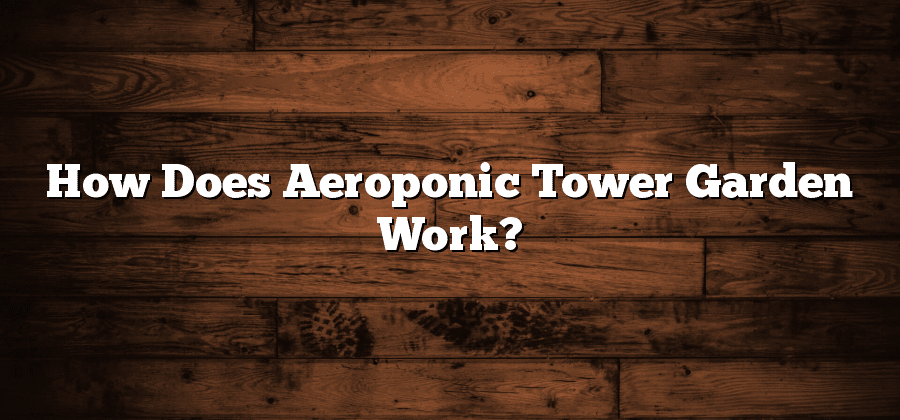What is an Aeroponic Tower Garden?
An aeroponic tower garden is an innovative gardening system that allows plants to grow vertically, without the use of soil. Instead of traditional digging and planting, the plants are suspended in air, with their roots exposed to a fine mist of water and nutrients. This unique method eliminates the need for traditional gardening tools, making it an ideal solution for urban environments or areas with limited space.
The concept of aeroponic tower gardens can be traced back to the ancient Hanging Gardens of Babylon, which were considered one of the Seven Wonders of the Ancient World. However, with advancements in technology and sustainable farming practices, this ancient gardening technique has been modernized and adapted into a practical and efficient system. Today, aeroponic tower gardens are gaining popularity as more and more people recognize their numerous benefits. This sustainable gardening method not only reduces water usage but also eliminates the need for chemical pesticides and herbicides, making it an eco-friendly and healthy option for growing fresh produce.
The Benefits of Aeroponic Tower Gardens
Aeroponic tower gardens offer numerous benefits for both commercial growers and home gardeners. Firstly, this innovative growing system allows plants to grow in a vertical manner, maximizing the use of limited space. With the ability to grow plants upwards instead of outwards, aeroponic tower gardens are ideal for urban environments or small gardens where space is at a premium. This vertical growth also makes it easier to care for and harvest the plants, as there is no need to bend or crouch down to reach them.
Another significant benefit of aeroponic tower gardens is the efficient use of water. By using a misting system to deliver nutrients and water directly to the plant roots, this method of gardening requires significantly less water compared to traditional soil-based gardening. In fact, aeroponic tower gardens use up to 95% less water than conventional farming methods. This not only helps to conserve water resources but also reduces the water costs for growers. Additionally, the closed-loop system of aeroponics prevents the runoff of water and nutrients, ensuring that every drop is utilized efficiently by the plants.
Understanding the Key Components of an Aeroponic Tower Garden
Key components play a crucial role in the functioning of an aeroponic tower garden. These components are carefully designed and strategically placed to ensure optimal growth and productivity. One of the main components of an aeroponic tower garden is the tower structure itself, which is typically made of food-grade plastic. This tower serves as a support system for the plants and houses the various parts necessary for their growth.
The Role of Water and Nutrients in an Aeroponic Tower Garden
Water and nutrients play a crucial role in the success of an aeroponic tower garden. In this innovative system, water serves as the medium for delivering essential nutrients directly to the plant roots, eliminating the need for soil. By supplying the plants with a nutrient-rich solution, aeroponic tower gardens ensure that they have everything they need for healthy growth.
The water in an aeroponic tower garden is typically stored in a reservoir at the base of the tower. From there, it is pumped up to the top and distributed evenly across the tower through a network of misting nozzles or drippers. This misting or dripping action creates a fine spray or gentle flow of water that cascades down the tower, bathing the plant roots along the way. The continuous flow of water ensures that each plant receives an equal share of water and nutrients, promoting uniform growth throughout the entire tower.
How Does the Aeroponic System Work in a Tower Garden?
The aeroponic system in a tower garden is a unique and innovative way to cultivate plants without the use of traditional soil. Instead, this system relies on air and water to deliver nutrients directly to the plant roots.
The tower garden consists of vertical columns or towers, with each tower housing multiple planting pockets. The roots of the plants are suspended in a misting chamber, where a nutrient-rich solution is continuously sprayed onto them. This solution is carefully balanced to provide all the essential elements that plants need to grow and thrive. As the roots are exposed to the nutrient mist, they are able to absorb the necessary elements directly, bypassing the need for soil. This aeroponic method allows for more efficient nutrient absorption and can result in faster growth and higher yields.






